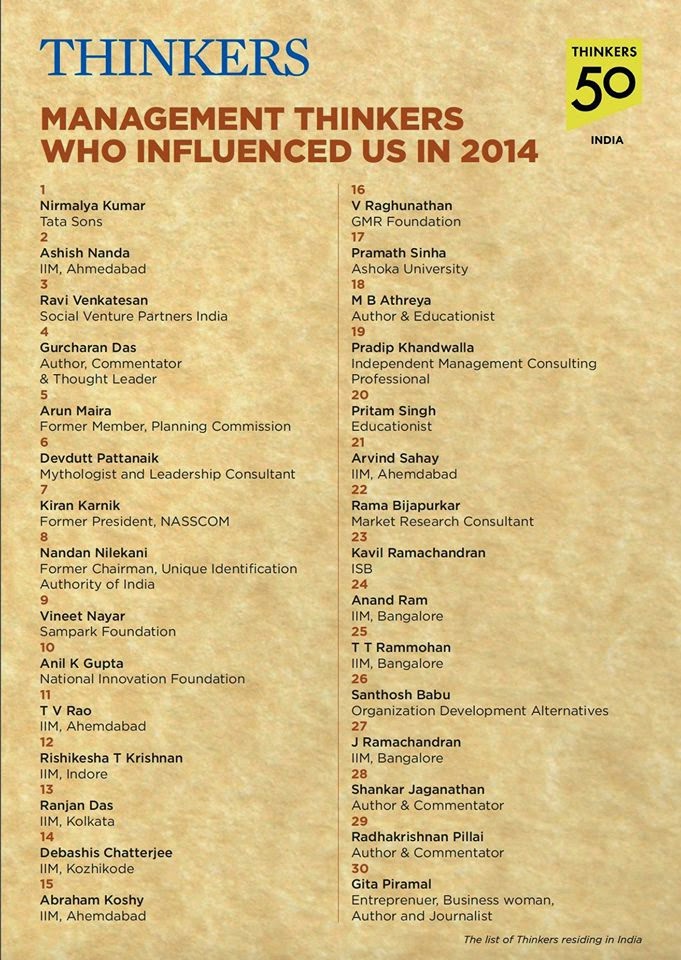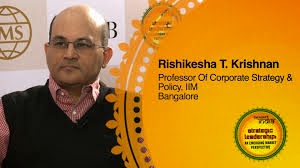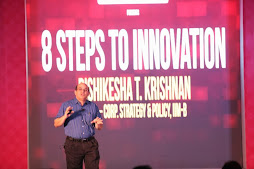The news that the United States has intensified pressure on
India on intellectual property-related laws and policies by putting us on a new
watch list doesn’t come as a surprise. This was bound to happen after India
denied patent protection to some new drugs of influential American
pharmaceutical companies such as Novartis’s Gleevec as they don’t meet the standards
of novelty and inventiveness as defined under Indian patent law. And, ever
since India issued a compulsory licence to Natco Pharma to produce a Bayer cancer
drug in March 2012, inventor pharma companies have been distinctly unhappy with
India.
Why are Pharma Companies Paying more Attention to India?
There is a slide I use in my class when I am teaching
industry analysis to show that industry matters. It shows the profitability
across different industries based on the return on equity offered by each. The
pharmaceutical industry is right up there with an ROE of 27-28% for the period
1999-2001 (this is data for the United States.)
But, in recent years, pharma companies have struggled to
keep up these performance levels. R&D costs continue to be very high, and
the frequency of discovering blockbuster drugs has come down. At the same time,
competition has increased, and generic drug companies have become more
powerful.
One outcome of this is the rash of mergers we have seen over
the last decade.
Another has been growing attention to large and increasingly
prosperous markets like India which were historically off their radar screens.
Pharma companies have become more sensitive to appropriating
the returns from whatever drugs they develop, and hence focus on obtaining the
maximum level of patent protection for new molecules.
Is their Position Justified?
Pharma companies never tire of underlining the importance of
tight patent protection to enable them to recover the high costs of drug
development. But, while the companies themselves attribute the high prices of
their drugs to the long duration of the drug development process, the high
failure rate of drugs, and the cost of the extensive trials required by the US
FDA, many critics question these claims pointing to the high marketing costs
that the firms incur in trying to persuade doctors to prescribe their drugs and
patients to ask doctors for their drugs by name.
Somehow, the pharmaceutical industry (and others demanding
stricter intellectual property laws in India) seem to have forgotten that
patents were never meant to be a one-way street. Rather, the philosophy behind
the patent system is that inventors share their knowledge with society in
return for a temporary monopoly over the financial returns of their invention.
This is in the interest of both the inventor and society – the inventor has an
incentive to come up with new things, and society benefits both from the new
functionalities created by the inventors and the ability to build on what the inventor
has done already.
The pharma industry argues that their high returns are
justified both by the tremendous improvements in health that we have seen over
the last hundred years, and the high risks that the industry takes in pursuing
discovery research, but as many critics point out, a lot of the basic research
that forms the backbone for drug discovery is funded by the US Government
through the National Institutes of Health.
Can Pharma Companies Take the Moral High Ground?
Not so long ago, pharma companies showed disdain for human
life when they refused to make available the AIDS cocktail to African countries
at affordable prices. My students were shocked to see this insensitivity when
they saw the film “Fire in the Blood.” It took the combined effort of activists,
Bill Clinton, Indian pharma companies like Cipla and many others to make a
reasonably priced alternative available, and hence save many lives. What a far
cry from the time when Merck made Ivermectin available free of cost to control
the spread of river blindness in many African river communities.
And, in recent years, some of the best pharma firms have
been found to fudge trials data, which certainly means they can’t take the high
moral ground.
All this has led to the pharma industry being distrusted by
many. An interesting manifestation of this distrust is the new conspiracy theory that the Ebola virus has been spread and hyped up deliberately so that
healthcare firms can make a killing from vaccines and therapies related to the
virus.
Options before the Government
The government will have a tough time dealing with this
pressure from the US government on behalf of large pharma as it has already
attracted criticism from the developed world by staying firm on the food
security issue, and thus delaying an agreement in the next round of global
trade talks.
So, what should we do?
While compulsory licensing should be used sparingly, we
should not give up this provision. The threat of compulsory licensing, if
nothing else, induces companies to be more creative in their strategies.
Witness the recent deal between Gilead and Cipla where Gilead has licensed
Cipla to produce and distribute one of its new drugs in relatively poor
economies at significantly lower prices than in their home markets.
Many global pharma companies had started out-sourcing trials
to India, but this came to a halt after we started making the trials approval
process too complex and opaque. We need to take a fresh look at this quickly,
create transparent but subject-sensitive clinical trial guidelines and try to
revive India’s position as an important location for clinical trials. This will
help us engage more positively with the pharma industry.
Any change in our
position on patents must be contingent on significant investment by global
pharma in India, in programmes to address diseases of interest to us including
marlaria and tuberculosis.
The government should support R&D by Indian pharma
companies and encourage the development of local capabilities in drug
development. This is critical because many of the Indian companies that entered
new drug development have since exited because they were unable to sustain
their investments or get adequate rewards.
In conjunction with all of this, while we should prevent
egregious evergreening, perhaps it’s time to see whether we have defined
patentability of drugs too narrowly in the Patents Act of 2005.
India should come First
I remember reading an article or book chapter by Jagdish
Bhagwati some years ago in which he argued that multinational corporations
don’t pose a threat to national sovereignty, but that countries do need the
ability to deal with them.
The present government has indicated its keenness to stand
up for what it sees as the national interest. I hope this includes taking a
firm stand on the patents issue. I am not sure what to make of the government’s
recent decision to limit the scope of the National Pharmaceutical Pricing
Authority – is this just a manifestation of the government’s pro-market stance,
or is this a signal to reach out to the pharma industry?
India should not give up on any of its sovereign rights,
including the right to define what is patentable and what is not, without
getting something substantial in return.
[The views expressed here are the personal views of the
author.]

































